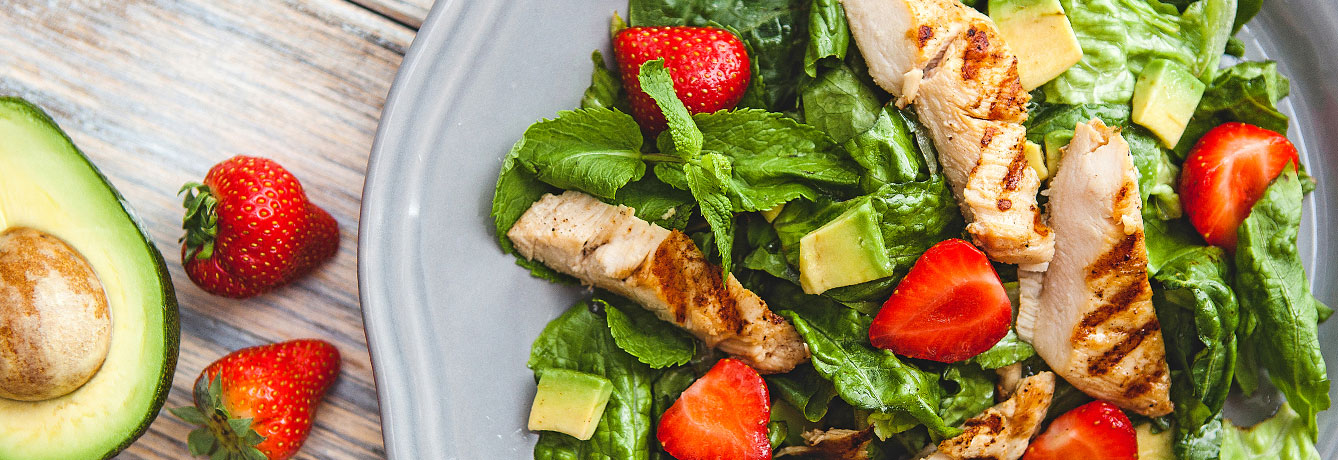How to Build an Entrée Salad

Salads can make a light appetizer or side, but when it comes to meal a simple salad may not be enough. Or there’s the flipside: Restaurant salads that pack enough calories for the day. Whether it’s a bagged lunch for school or a quick weeknight meal, here is your roadmap to a perfectly balanced entrée salad:
Start with a green base. Spinach and baby kale are among the most nutrient-dense options, but kids may prefer the milder taste of Romaine or butter lettuce. Even the oft-dismissed iceberg offers 25% of daily vitamin K per serving, so choose whichever green your palate is craving that day and pile it into your bowl.
Add more nutrition, in the form of fruits and vegetables. Aim for about one cup total (more for some adults, maybe less for some kids) and try to vary the colors so you get a mix of nutrients. Crunchy orange carrots bring vitamin A, while juicy red tomatoes bring the antioxidant lycopene. “I use leftover roasted vegetables from dinner in my salads for lunch the next day,” says Jenn LaVardera, MS RD, dietitian for Dole. “Roasting vegetables transforms the taste and texture. Cauliflower, Brussels sprouts, broccoli and sweet potatoes are some favorites.” For a little sweetness, add some fruit—berries or segments of citrus like orange or grapefruit work well in salads.
Choose a lean protein, such as chicken, tuna, salmon or a vegetarian source like quinoa or tofu. “To build a hearty entrée salad, try adding beans,” advises Chef Mark Allison, Director of Culinary Nutrition for Dole. “Beans are high in fiber and are packed with antioxidants. They’re good for the waistline, may aid in disease risk reduction, and add creamy texture.” Keep portion sizes in check: Poultry and fish should be the size of a deck of cards (3 ounces), while a serving of beans or quinoa is ½ cup.
Pick healthy fats, like avocado, olives, nuts, seeds or a little feta cheese. Fat promotes satiety and can even increase the amount of fat-soluble nutrients—including vitamins A and K—your body absorbs. Just don’t go overboard! You want roughly one ounce of fat total: about a quarter cup of nuts or cheese, six large olives, or a quarter of a large avocado. If you are using an oil-based dressing, you’ll have some fat there too, so you would want to add a little less.
Dress it up! A simple drizzle of olive oil and a squeeze of lemon juice allows the flavors of the salad to come alive in your bowl, but you can certainly get more creative too. Infused oils and balsamic vinegars are great investments, or make your own dressing at home.
Check out dole.com for some of our favorites.Need a little more inspiration? Our Viva Verde Veggie Salad starts with a base of kale and adds red bell pepper and jicama, black beans and quinoa for protein, avocado for healthy fat and Salsa Verde Vinaigrette to tie it all together.
Published September 1, 2016
Get Some Fresh Inspiration


